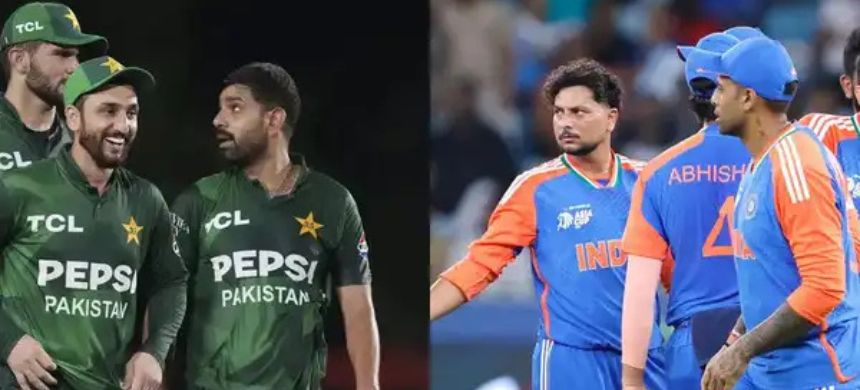Pakistan’s Asia Cup was a commendable campaign, with the team coming close to toppling India in the final. However, this recurring “close but no cigar” scenario—seen in crunch games from New York to Melbourne—highlights key issues that need to be addressed. Immediate actions are required to ensure the team performs in big pressure situations and the fans are not repeatedly subjected to painful near-misses against top rivals.
Positives
Coaching and On-Tour Selections:
For once, coaching decisions and on-tour selections were sensible. Mike Hesson, along with his bowling and fielding coaches, must be lauded for the structure, thoughtfulness, and positive change they brought into the team. Fielding was arguably the best in the tournament, with Pakistan’s outfielding and catching outperforming all other teams statistically, including India, despite costly lapses in the final involving a dropped catch and a missed run-out. Shaheen Afridi’s bowling showed improvement, and the batters often took the positive route, so credit must be given to the thought process imparted by the coaches. Even though batting execution was under par at times, overall there were positive signs in all three facets of the game, and Hesson and his staff deserve credit.
Coaching staff is being credited here primarily to ensure that PCB understands that Pakistan cannot immediately start winning big trophies with coaches changing frequently. But if coaches are moving the team in a positive direction, like in the Asia Cup, PCB must allow them time to get the team right so they are ready to win major trophies when the time comes. Knee-jerk reactions on changing coaches must be avoided at all costs now.
On-tour selections with the available players made sense. Playing eight batters, with Faheem Ashraf at number 8 as an all-rounder, was logical, as most teams now ensure they have batting depth till number 8. Harris Rauf, after bowling well against India in the second game, was the obvious choice over Sufyan, who didn’t perform as well in the first game. Bringing in Hussain Talat, who has more first-class experience and has shown the ability to play spin well, was also a sound decision.
While the “players’ execution” (Rauf, Talat, Saim, Harris) didn’t match expectations, the decisions on tour themselves reflected sound thinking by the coaching staff. Now, the selection committee that picked these players for the tour—unfortunately, that committee over the past 18 months has often made selections that defy logic. We will touch on that later, but on tour, the coaching staff made most decisions that made cricketing sense.
Issues to Fix
Strike Rate is Overrated:
Pakistan seems to have over-indexed on strike rate at the cost of winning matches. Babar and Rizwan need to be back. A player who plays according to situation and wins games is more important than someone striking at 180-200 and losing. On a good cricket pitch, a player like Babar and Rizwan will still give you close to the runs a hitter like Mohammad Harris might give, but on tricky wickets like UAE, Babar and Rizwan will certainly get more runs than Harris. This so-called high strike rate is a must-type thinking needs to be stopped immediately. You must read a wicket and play accordingly and that’s what was missing in the Asia cup final. It’s also interesting that the players like Agha and Talat that have been brought into the team have lower strike rates and averages than Babar and Rizwan, so it’s just senseless to keep them out.
Where Babar and Rizwan bat is a key question that Mike Hesson has to sort, provided the selection committee selects them. Farhan and Fakhar should open, Babar could come at 3, with Rizwan floating likely at 4. Rizwan is a player who will work hard to adapt, so even though number 4 may not suit him naturally, he is still a better choice overall than Mohammad Harris. Rizwan does bat at 4 in one-dayers, which could help him adapt quickly.
Pakistan also needs to think carefully about numbers 5 and 6. One quick fix could be bringing in a player with vast experience like Saud Shakeel. Again, he’s not a hitter, but he’s the best player of spin Pakistan has. Then you have Mohammad Nawaz, who must be included. Hassan Nawaz is a tough call—he didn’t perform, but he’s young, so it’s a 50-50 call. Hussain Talat could also still be kept, as players need at least 8–10 matches before being removed. The batting order should revolve around these players, with Babar and Rizwan anchoring the lineup. Saim must regain his confidence, but again he could be part of the 15 and used as needed, cause his bowling was solid this Asia Cup.
Captaincy Concerns
Salman Agha’s captaincy wasn’t bad on-field, but he lacks T20 pedigree or record. He hasn’t topped any T20 domestic tournaments; in fact, he very recently entered a PSL team, and his numbers—both average and strike rate—are underwhelming. His inclusion seems aimed at removing Rizwan, allegedly over strike rate concerns. Removing Rizwan after one or two series was a blunder. Among available players, Rizwan remains the best captain option, provided Aaqib Javed stays away from selections.
Selection Committee Failures
The Aaqib Javed-led selection committee has consistently failed to make logical selections. There are multiple examples of illogical selections that makes one think that selection is not on merit and there is some type of senseless interference that’s very problematic for the team: A few examples over the few months below show the ineptitude of this selection committee:
- It was atrocious to not pick 2–3 proper spinners for a Champions Trophy to be played in UAE and Pakistan. That was a blunder that deserved immediate firing of the committee.
– Babar and Rizwan sidelined over “strike rate” issues, even though its clear they are Pakistan’s most stable
– Naseem Shah overlooked despite him being in good form and an overall better option than Harris Rauf on UAE pitches
– Akif Javed ignored after performing well against New Zealand, while Salman Mirza was picked and no one knows why Akif is not in any white ball plans
– Selecting a 38-year-old Asif Afridi for the Test team post-Asia Cup and dropping Saim Ayub in tests even though the format he struggled in was white ball mainly
With Mike Hesson as coach now hopefully Aaqib Javed’s direct meddling into the selection of the playing XI will stop. The job of a selection committee is to pick the 15-16 squad in consultation with the captain and coach. From there it is the captain and coach on tour that decides the team. In the recent past in Pakistan the role of a captain has been to just say yes to whatever team is given to him and that must stop immediately. The captain must be given the team he wants.
Merit-based selections are critical. Pakistan’s player pool is smaller than India’s, but proper first-class 4-day performance over 2-3 seasons should be the main criteria for selection. On the Test side, Azhar Mehmood has coaching responsibilities, but history shows local coaches often compromise for job security, leading to team failures.
As a solution to this selection committee related mess, PCB should consider either bringing in Inzamam-ul-Haq (Champions Trophy winner as chief selector) or Mohammad Wasim (World Cup finalist under him) as chief selector, with Mike Hesson as all-format coach and Rizwan as all-format captain. Captains and coaches should have meaningful input in selections. With the above names as selectors and Rizwan and Mike Hesson as captain and coach respectively, Pakistan can certainly challenge India and other top teams in the world.
Deeper Grassroots Issues
Selections across age-group, district, and regional cricket are absolutely not on merit. Regional presidents seem to influence who is in the regional team, and similarly district presidents influence district team selections. Coaches don’t say much because they want to keep their jobs. PCB needs to monitor selections at least at regional, grade-2, and first-class levels.
Age-group cricket needs to go back to 2–3 day formats so younger cricketers can learn how to bat for 90 overs or bowl 20 overs in a day. India and Australia make their under-19s play 3 or 4 day matches, but in Pakistan we are still on 50-over cricket at that level, which essentially means we are not producing ready cricketers. Longer bowling spells help refine length and build muscle memory to bowl in the right areas. Similarly, different phases of an 80-over day teach batters how to handle new, semi-new, and old reversing balls, preparing them for bigger challenges ahead.
We also hear about club cricket dying in bigger cities like Lahore and Karachi, which PCB needs to address. Talent is now largely emerging from far-flung areas of KP. PCB must invest in academies across Pakistan, especially in these regions, and ensure transparent and merit-based spending. Immediate focus on these areas will help fast-track youngsters who are currently producing high-quality talent.
Conclusion
Pakistan has the talent to beat India and other top teams within a 6–12 month timeframe. Below are a few key things PCB needs to immediately to push to the top of world rankings and beat teams like India:
– Clear definition of goals for PCB with the primary goal being making Pakistan team number 1 across formats
– Merit-based selections at all levels. PCB needs to implement selection checks at district, regional, grade two, first class and national team levels to ensure the most deserving players make it to the team
– Babar, Rizwan and Naseem must be back in the T20 team asap
– Clear and situation-appropriate batting strategies with batters given clean plans based on pitches they are playing on (Head coach role is key here)
– A captain with T20 pedigree and execution skills. Rizwan is still the best overall choice for the job and if hes made the captain he must be given authority to select the team he wants
– Change the selection committee immediately and bring in Inzamam or Mohammad Wasim as chief selector
If these structural and strategic issues are addressed immediately with some of the changes suggested above, Pakistan can convert its potential into consistent victories against elite teams.












